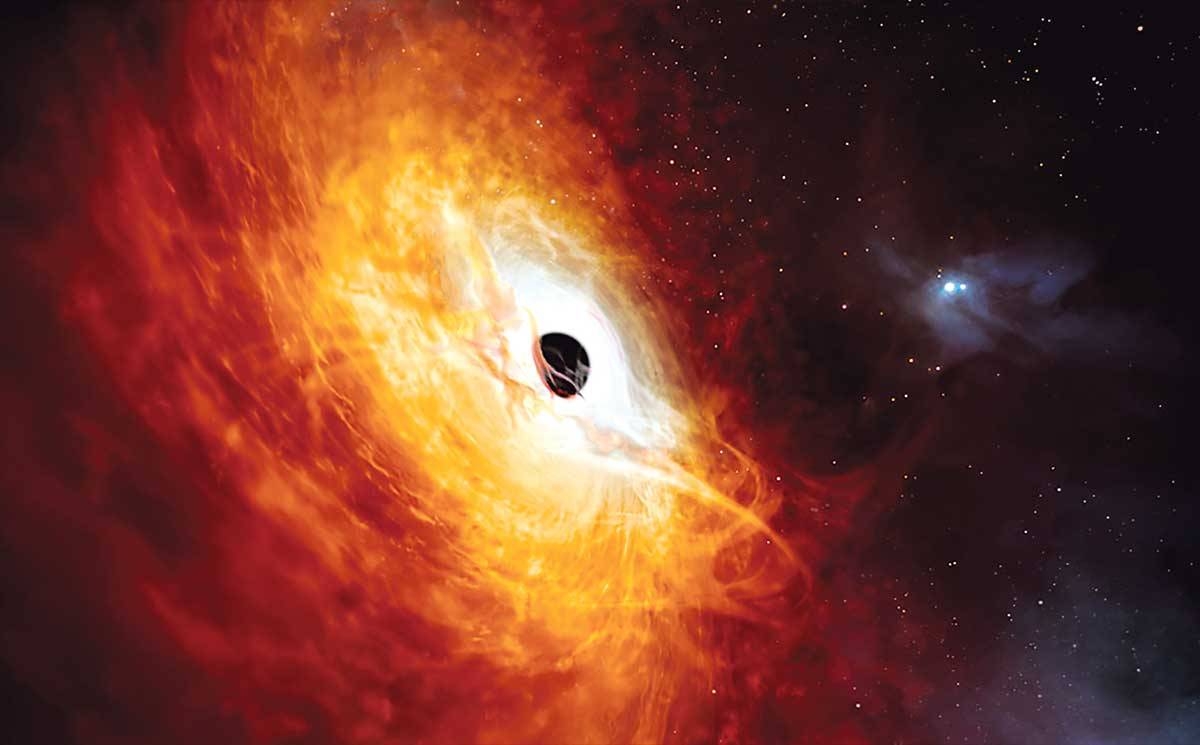Astronomers have recently made an astonishing discovery that could potentially be the brightest object in the universe. This extraordinary finding involves a quasar, which is characterized by a black hole at its core that is growing at an unprecedented rate, devouring the equivalent of a sun every single day. The sheer brilliance of this record-breaking quasar is estimated to shine 500 trillion times brighter than our own sun.
A team of researchers led by Australian National University reported their findings in the journal Nature Astronomy. They revealed that the black hole fueling this distant quasar is over 17 billion times more massive than our sun. Although the quasar may appear as a mere speck in images, scientists envision it as a ferocious and violent cosmic phenomenon.
The swirling disk surrounding the black hole, composed of luminous gas and matter from consumed stars, resembles a cosmic hurricane. “This quasar is the most violent place that we know in the universe,” said Christian Wolf, the lead author of the study, in an email.
Interestingly, the European Southern Observatory initially spotted this object, named J0529-4351, during a sky survey in 1980. However, it was initially misclassified as a star and not identified as a quasar until last year. Further observations conducted by telescopes in Australia and Chile’s Atacama Desert confirmed its true nature.
The significance of this quasar lies in the fact that it was hiding in plain sight for decades. Yale University’s Priyamvada Natarajan, who was not involved in the study, expressed excitement about this discovery, stating, “The exciting thing about this quasar is that it was hiding in plain sight and was misclassified as a star previously.”
Through subsequent observations and computer modeling, scientists have determined that this quasar devours the equivalent of 370 suns annually, equating to roughly one sun per day. The research team estimates the mass of the black hole to be between 17 and 19 billion times that of our sun. However, further analysis and observations are required to fully comprehend its growth rate and behavior.
Located 12 billion light-years away, this quasar has existed since the early days of the universe. To put this into perspective, a light-year measures approximately 5.8 trillion miles. The immense distance and age of this cosmic phenomenon add to its awe-inspiring nature.
Astronomers continue to explore the vast expanse of the universe, unearthing remarkable discoveries such as this record-breaking quasar. With each new revelation, our understanding of the cosmos expands, offering glimpses into the wonders that lie beyond our own celestial neighborhood.







